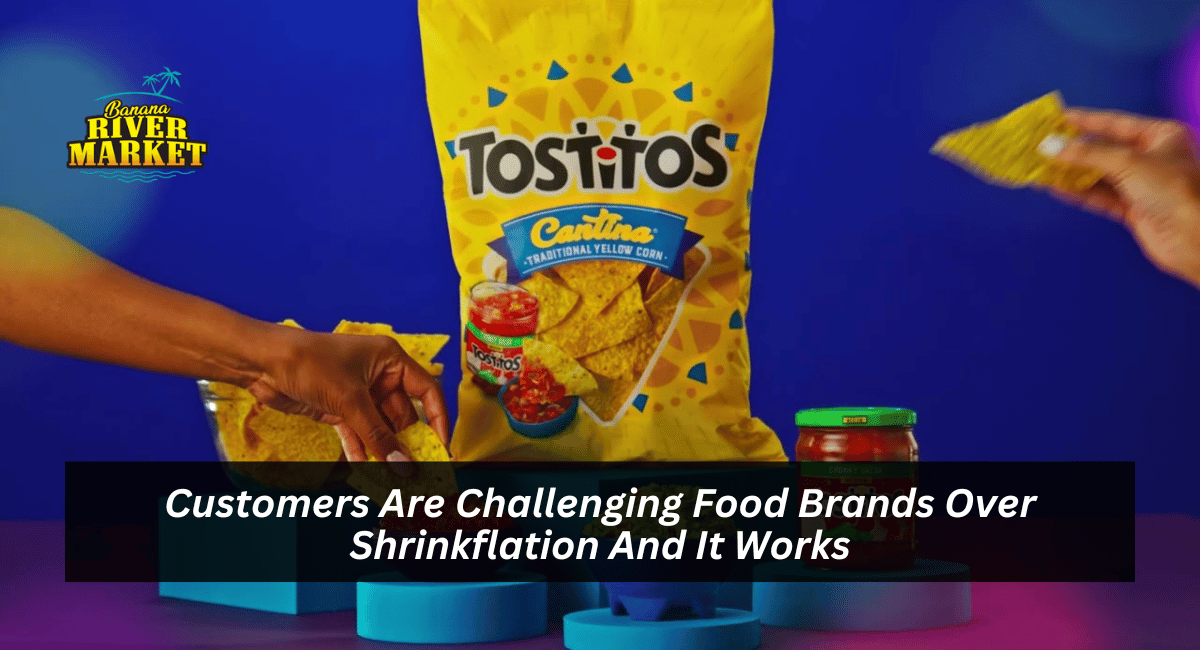Shrinkflation has been a persistent issue for consumers, where companies keep prices steady while reducing the size of their products. This sneaky tactic dates back to the 1950s, but today’s shoppers are no longer willing to accept it quietly.
Thanks to the power of social media, consumers are holding brands accountable, and it appears to be making a difference.
What Is Shrinkflation?
Shrinkflation refers to reducing the quantity or size of a product while maintaining the same price. For example, a bag of chips might shrink from 12 ounces to 10 ounces, but you still pay the same amount.
This approach can be frustrating for shoppers, who feel they’re getting less value for their money.
Historically, brands have employed shrinkflation to combat rising costs without raising prices. But in recent months, consumer outrage has sparked a more significant conversation around this issue, and companies are beginning to listen.
Chipotle’s Response to Customer Feedback
In response to mounting criticism, Chipotle announced it would focus on providing “generous portions” to its customers. While the company never claimed an official directive to cut back on portion sizes, this move acknowledges the public’s dissatisfaction.
Shoppers have taken to social media to express their concerns, and Chipotle’s promise to do better feels like a response to that outcry.
PepsiCo Takes Action
PepsiCo has gone even further in addressing shrinkflation. A representative said the company would add 20% more chips to its “bonus bags” of Ruffles and Tostitos without changing prices.
This decision directly results from public backlash, showcasing the power of consumer voices in shaping corporate practices.
Social media platforms are flooded with complaints about shrinking product sizes, as former Labor Secretary Robert Reich highlighted. He pointed out various shrinkflation affecting popular products.
Gatorade bottles were reduced from 32 ounces to 28 ounces, family-size Wheat Thins shrank by 12%, and Cocoa Puffs decreased by 6%. Even snack favorites like Doritos saw a 5% reduction in bag size.
Consumer Outrage
The frustration among consumers is palpable. One TikToker shared a video of himself opening a snack-sized bag only to find five chips inside.
Comments like “I can’t even bring myself to buy chips anymore” and “To get two handfuls in a $6 bag is maddening” flooded the post, illustrating how widespread this sentiment is.
A Broader Trend
The issue of shrinkflation is not isolated to a few brands. Many consumers notice that regular products are getting smaller while prices remain the same.
A quick look at social media reveals countless posts where shoppers share their disbelief over portion sizes.
For instance, users have pointed out that Doritos removed five chips from each bag, and Bounty trimmed its rolls by three sheets. The family-size box of Wheat Thins is now 2 ounces smaller, all while consumers are expected to pay the same price.
Political Action Against Shrinkflation
It’s not just consumers who are speaking out against shrinkflation. Lawmakers are also taking a stand. Senator Elizabeth Warren and Representative Madeleine Dean recently wrote letters to major companies like PepsiCo, General Mills, and Coca-Cola, expressing their concerns.
Warren stated, “People have noticed that their box of Cheerios and a bag of Doritos are smaller, but prices are higher.”
She emphasized that it’s wrong for these corporations to benefit from price gouging while paying lower tax rates than the average American. This acknowledgment from politicians adds another layer to the fight against shrinkflation, showing that it’s a widespread issue affecting many consumers.
The Power of Public Pressure
The recent actions by both Chipotle and PepsiCo demonstrate the significant impact that public pressure can have on corporate practices.
Social media serves as a platform for consumers to voice their frustrations, leading to tangible changes in how brands approach pricing and portion sizes.
If PepsiCo can respond to consumer feedback by adjusting its products, its other brands could do the same. The tide seems to be turning, and consumers are gaining more influence over corporate decisions.
The Future of Shrinkflation
As shoppers continue to voice their concerns about shrinkflation, it remains to be seen how other food brands will respond.
Companies prioritizing transparency and listening to their customers will likely build stronger relationships and loyalty. On the other hand, brands that ignore public sentiment may face further backlash.
Conclusion
Shrinkflation is an ongoing challenge for consumers, but the recent responses from brands like Chipotle and PepsiCo show that public pressure can lead to meaningful change. Companies may be compelled to reconsider their practices as more shoppers speak out against shrinking portion sizes and rising prices.
This movement is about more than just snacks; it’s about holding corporations accountable for their actions. If consumers keep pushing back, there’s hope for a future where brands prioritize fair pricing and value.
So next time you notice a smaller bag of chips or a reduced portion of your favorite snack, remember: your voice matters.
Join the conversation and continue to advocate for fair practices in the marketplace. Together, consumers can make a difference.

